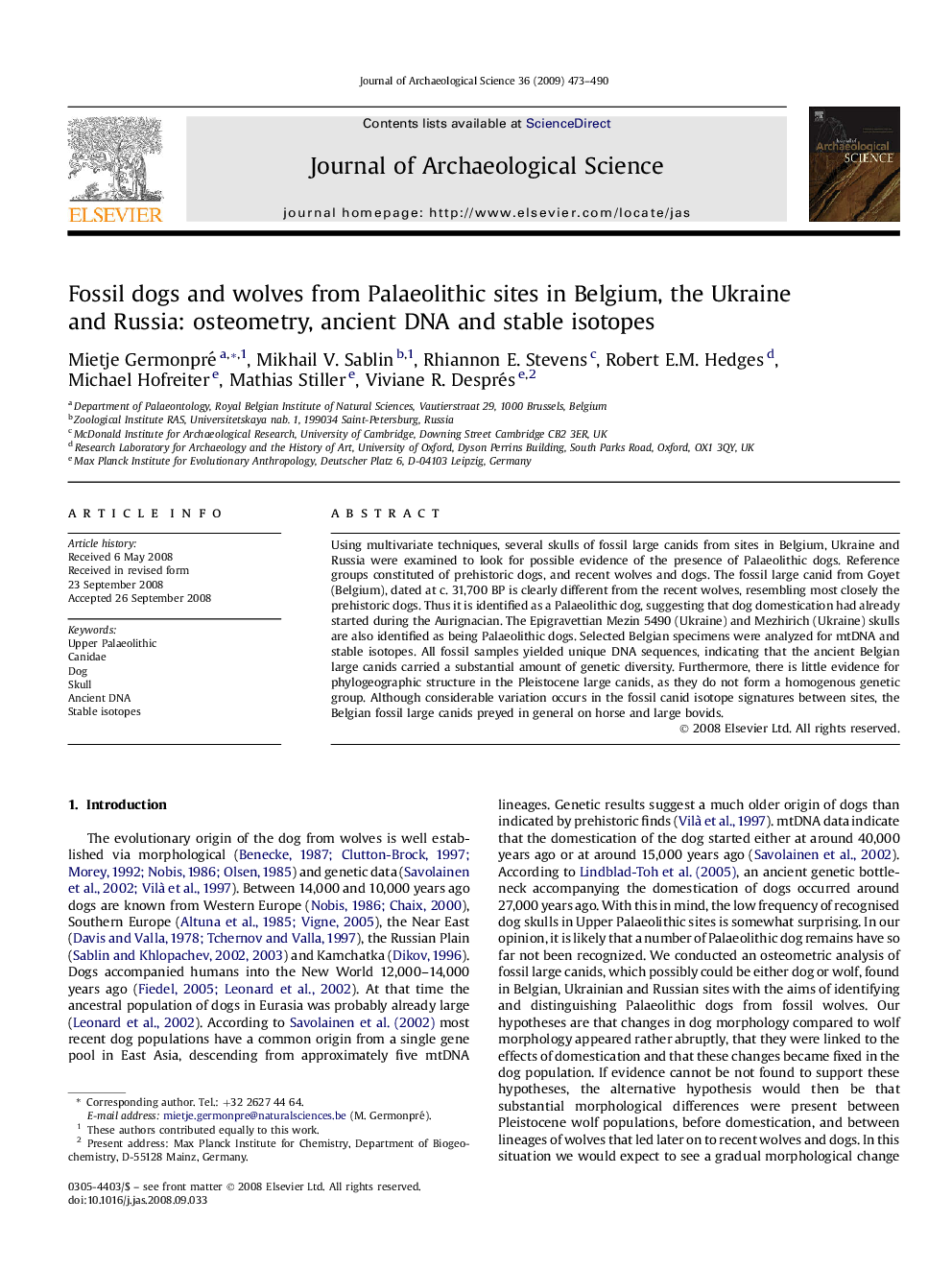| کد مقاله | کد نشریه | سال انتشار | مقاله انگلیسی | نسخه تمام متن |
|---|---|---|---|---|
| 1036258 | 943880 | 2009 | 18 صفحه PDF | دانلود رایگان |

Using multivariate techniques, several skulls of fossil large canids from sites in Belgium, Ukraine and Russia were examined to look for possible evidence of the presence of Palaeolithic dogs. Reference groups constituted of prehistoric dogs, and recent wolves and dogs. The fossil large canid from Goyet (Belgium), dated at c. 31,700 BP is clearly different from the recent wolves, resembling most closely the prehistoric dogs. Thus it is identified as a Palaeolithic dog, suggesting that dog domestication had already started during the Aurignacian. The Epigravettian Mezin 5490 (Ukraine) and Mezhirich (Ukraine) skulls are also identified as being Palaeolithic dogs. Selected Belgian specimens were analyzed for mtDNA and stable isotopes. All fossil samples yielded unique DNA sequences, indicating that the ancient Belgian large canids carried a substantial amount of genetic diversity. Furthermore, there is little evidence for phylogeographic structure in the Pleistocene large canids, as they do not form a homogenous genetic group. Although considerable variation occurs in the fossil canid isotope signatures between sites, the Belgian fossil large canids preyed in general on horse and large bovids.
Journal: Journal of Archaeological Science - Volume 36, Issue 2, February 2009, Pages 473–490